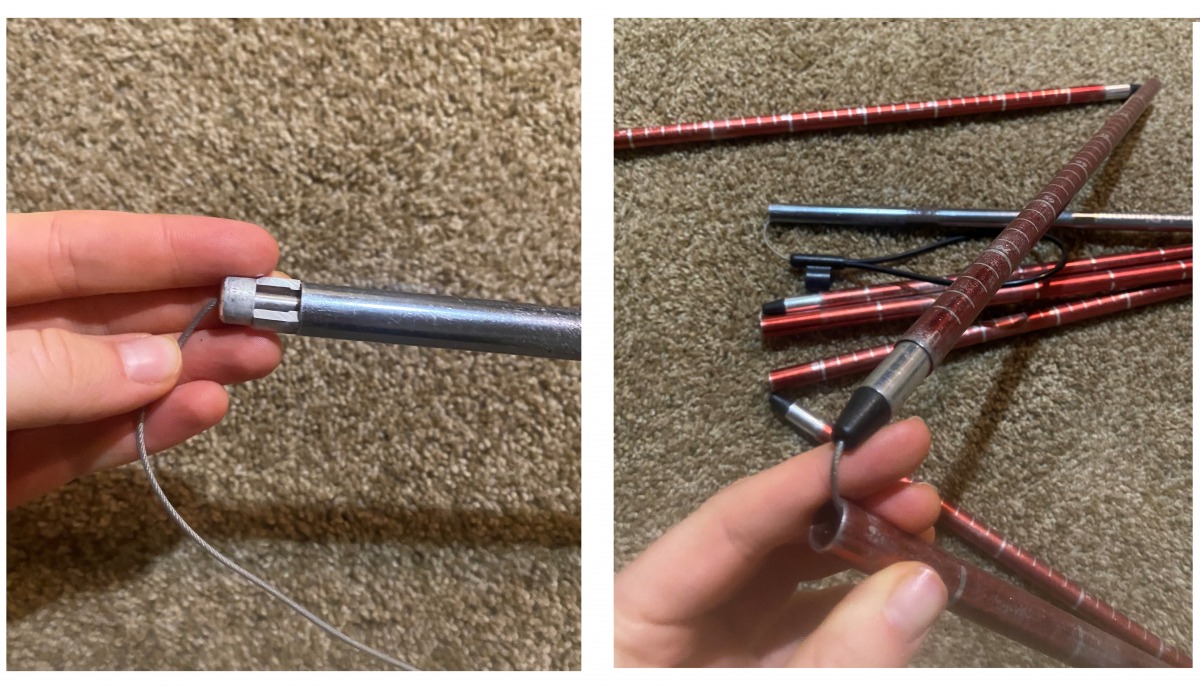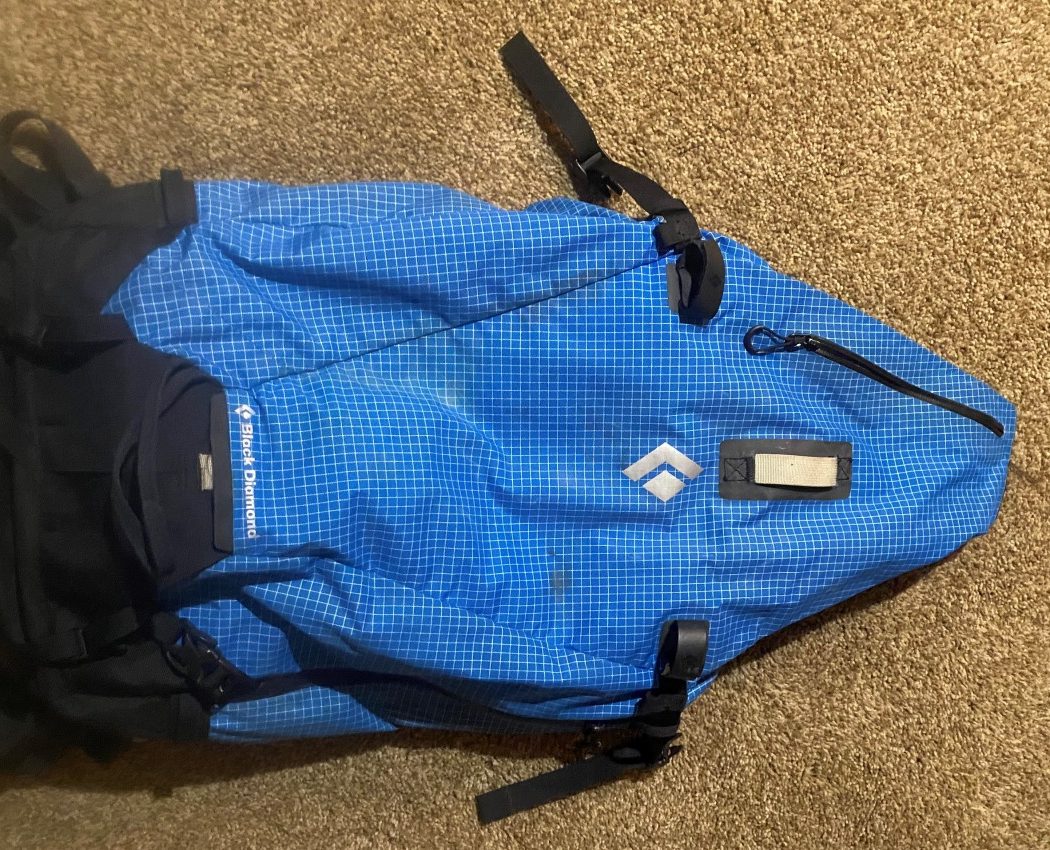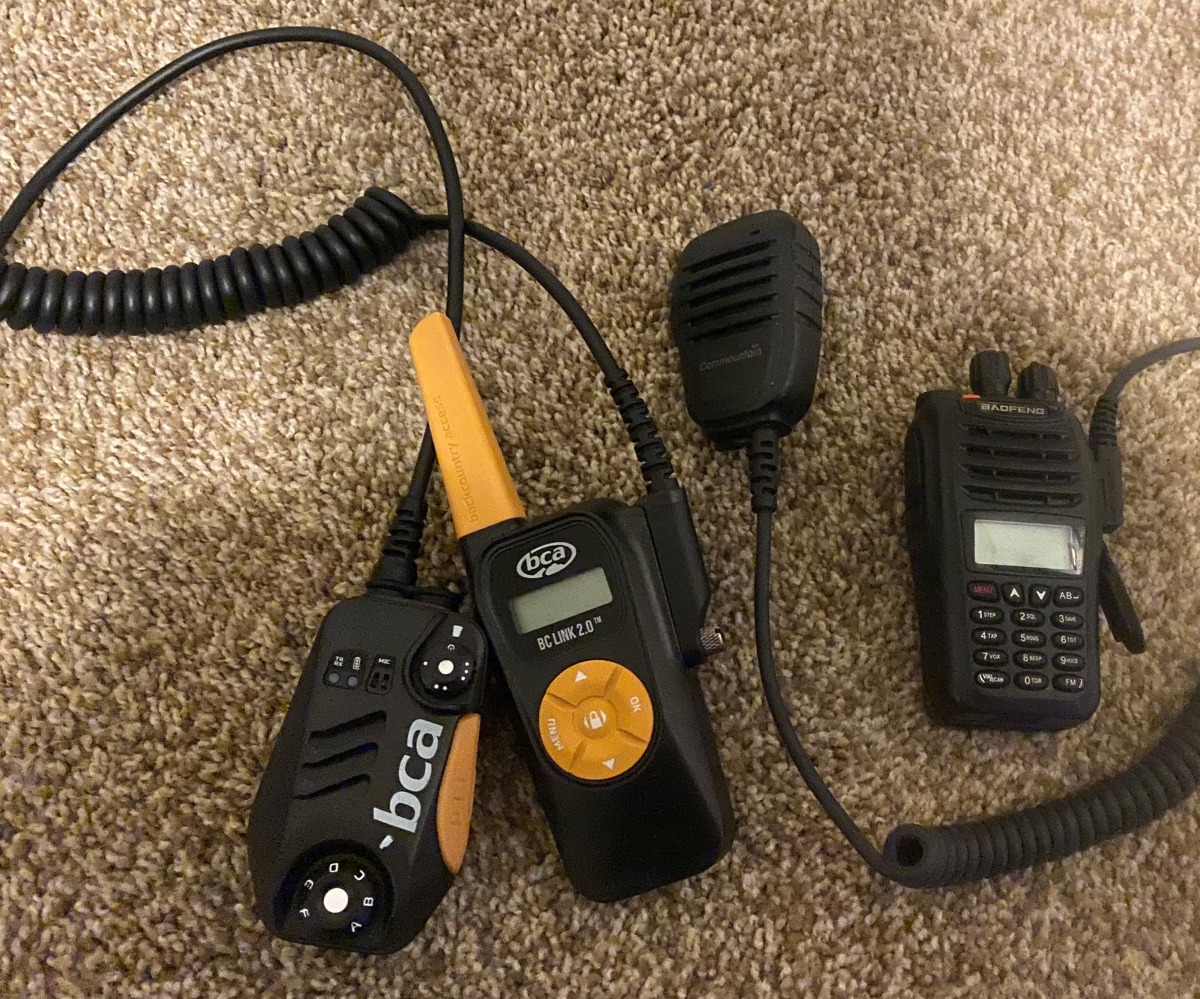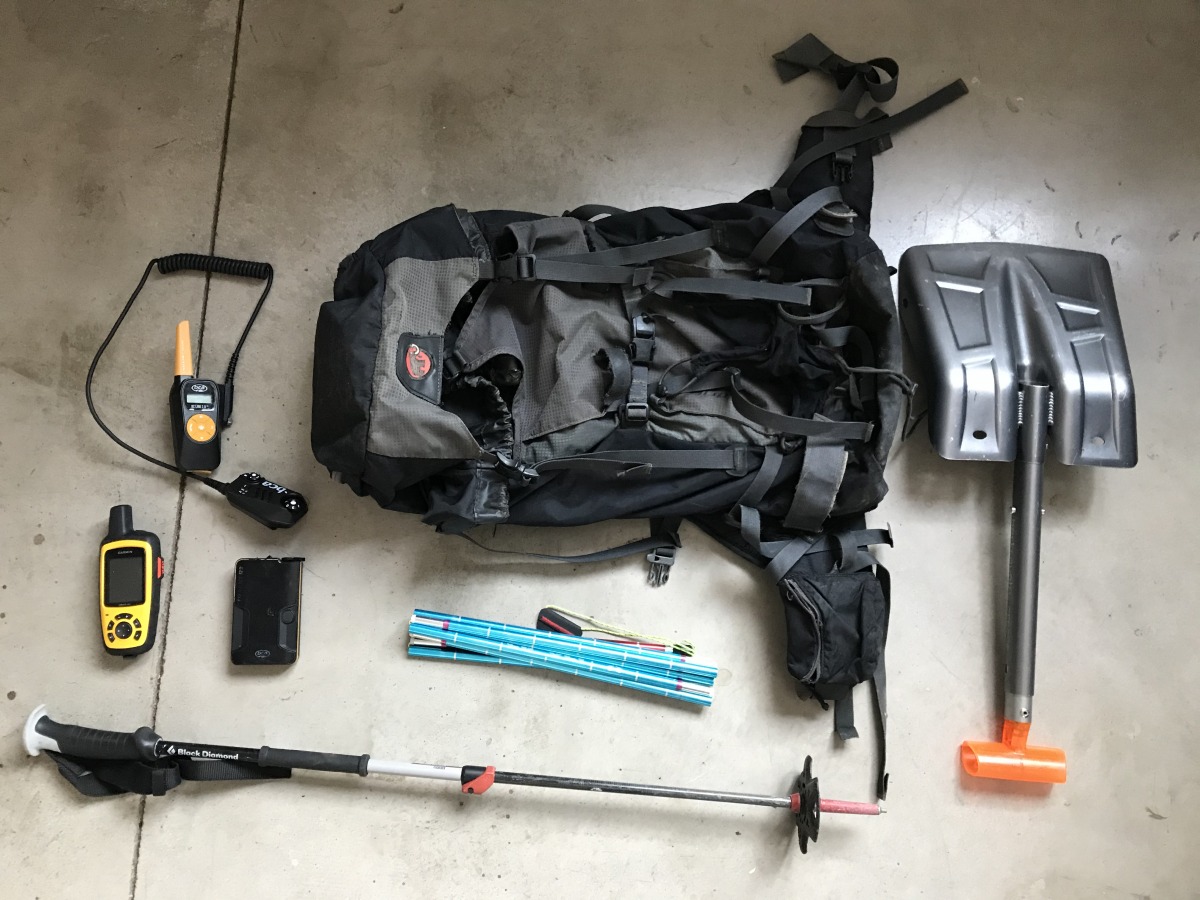
Buying used avalanche and safety equipment can be a great way to save cash, if you know what to look for.
In the first part of our used gear buying guide, we covered skis, boots, bindings and skins. However, that’s not all you need to be prepared for traveling in the backcountry.
In this next installment, we offer tips for buying used poles and rescue equipment, including avalanche gear. It’s worth noting that these are just guidelines. When in doubt, buy new (or look for sales if you’re on a tight budget) and employ the opinion of a more experienced skier that you trust.
Poles: does it even matter what they are?
Poles are indeed an important part of your backcountry skiing kit – but you don’t need the nicest poles for them to do the right job. If you already have alpine poles, using what you have is an easy way to save money. If your alpine poles have small, removable baskets, they can be replaced with a pair of powder (wider) baskets for about $10.
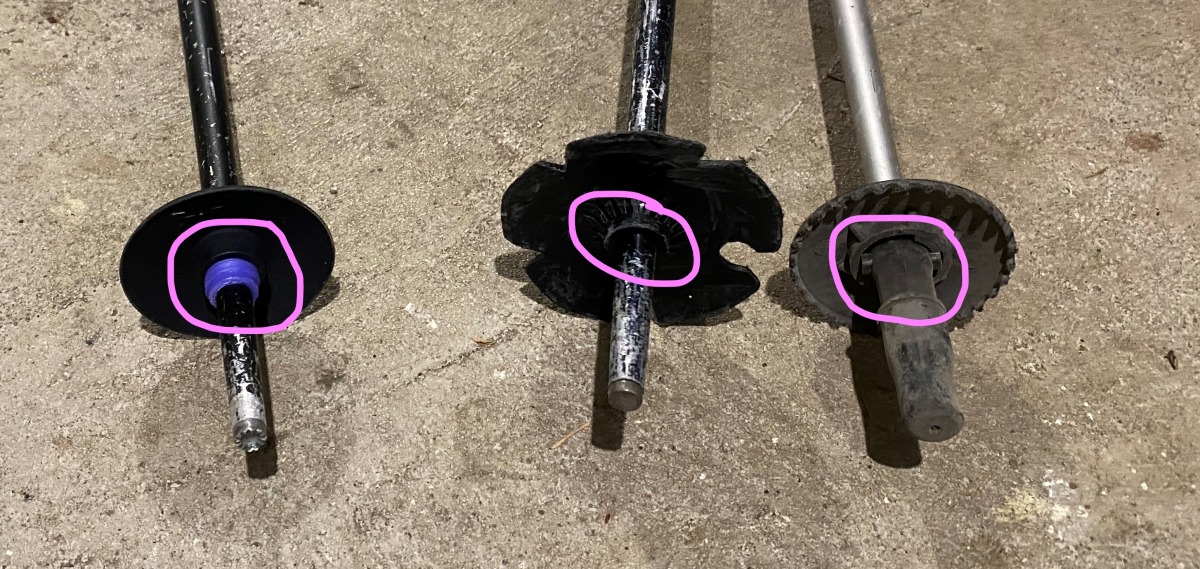
The pole on the left allows for basket replacement, (basket can be twisted off) when the other 2 poles on the right do not.
For touring, adjustable poles work better, however they will be more expensive. Per Lou Dawson recs, non adjustable poles shave weight and have a better “swing”.
Length is the most important consideration when purchasing poles. The way you measure the length you need is by putting on your boots (or imaging how much lift your ski boot gives you, which is likely slightly more than a shoe) and holding the pole upside down with the grip towards the floor, and your hand below the basket. This imitates pole length when the tip is stuck into the snow. You may want your pole a bit longer than your alpine poles when you are skinning, but it wouldn’t be the end of the world if it isn’t.
When shopping for used poles, make sure they are not bent or have obvious dents or nicks that may indicate they are headed that way, especially with carbon poles since those don’t tend to bend, they break. For adjustable poles, verify that they collapse and extend (and stay extended) as intended.
Avalanche Equipment
It is tricky buying used gear that helps save your life. If your budget allows you to buy only certain things new, my suggestion is to spend money on a new beacon.
The must have list of avalanche safety gear: beacon, shovel and probe.
Beacon: is it safe to buy used?
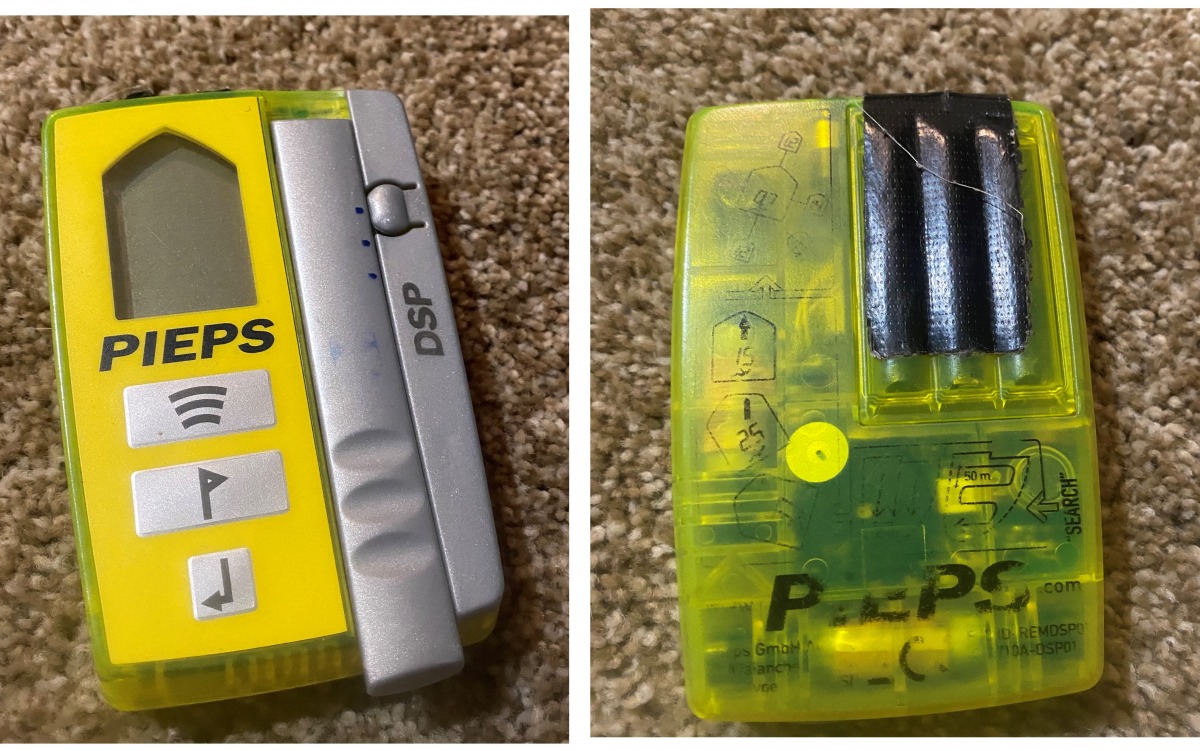
A well used Pieps beacon, most of the writing on the front and back has been worn off. If the duct tape didn’t give it away, this beacon would be a good candidate for a spare beacon or one to be donated to snow science.
As previously stated, newer is better but if you are on a tight budget buying a used beacon can work.
When buying a beacon, it’s important to check when the previous owner purchased it and in what condition. Anything that is older than 3 years from the original purchase date is not recommended.
Check if the beacon you want to purchase has any recalls; usually a simple Google search with the name of the beacon will do the trick. To be extra sure, visit the manufacturer’s website and look for any recall announcements and firmware updates.
We suggest that old beacons be donated to local avalanche centers or into the Ortovox beacon retirement program (which gets you $75 credit toward a new Ortovox beacon). This post provides an overview of what to do to check that beacon is working as expected.
Generally pay attention to the condition of the unit, if it looks anything but “like new” — clear display, no cracks, on-off and search-send work as intended — our suggestion would be not to buy it
Shovel: does any kind work?
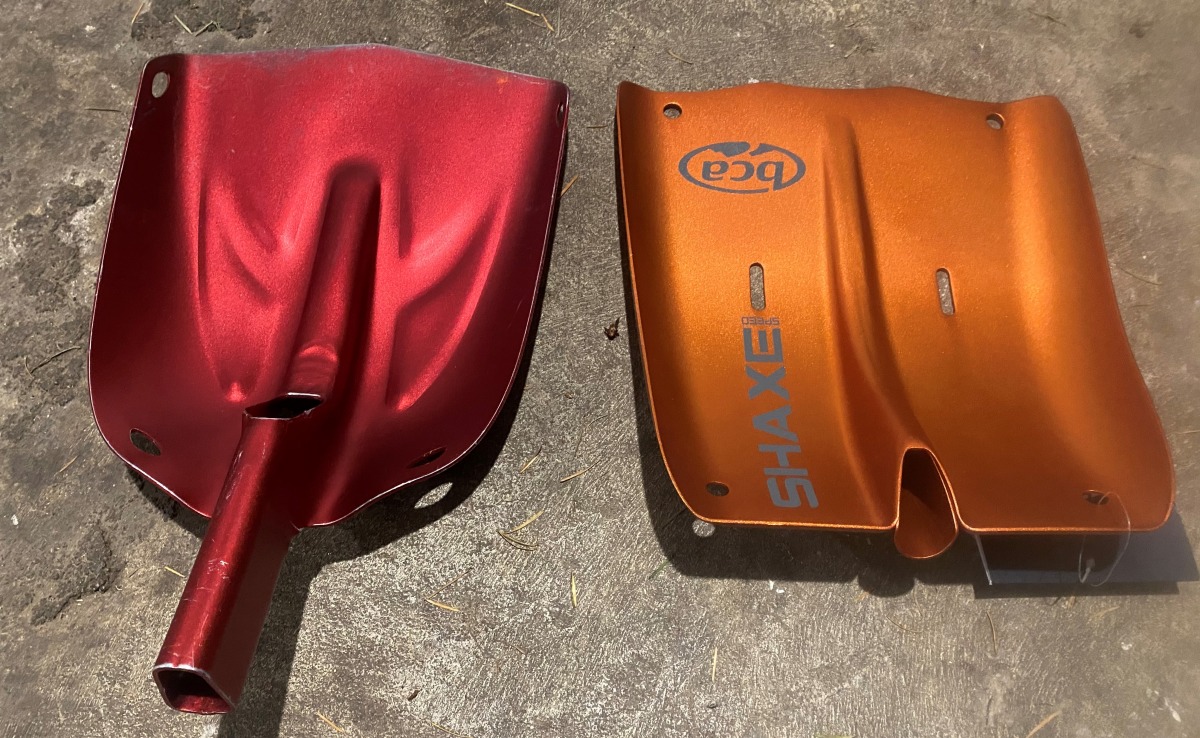
different sizes of shovels, the orange one being slightly larger than the red. In this shot, for contrast, one the orange one is brand new, and the red one is about 5 years old.
Plastic is a no go. Ideally, make sure it’s from a reputable brand, not Walmart-chinesium. Common ski touring brands include Voile, BCA, Mammut, Ortovox, Black Diamond etc.
Opt for the slightly bigger size if available. A bigger blade enables you to move snow more efficiently.
Check that the handle attachment/removal mechanism works as expected and that the shovel stays extended.
Look to make sure there are no cracks or breaks in the shovel blade.
If you have the backpack you want to carry the shovel in, bring it with to check that the shovel fits.
Probe: how long is long enough?
Shorter probes can be okay but I suggest going with the longest length probe if available (~300mm).
Inspect the cord inside the probe for signs of wear and tear. A probe with a metal cable is better than a probe with a fabric cord, trading durability for weight.
A carbon probe is slightly lighter, but aluminum ones are more durable and cheaper.
Check the mechanism that locks/unlocks probe.
Look for any rust or corrosion (indicated by brown or white powder), as this could indicate further wear and tear.
Below you will find a few other items that we recommend you to invest in.
Avalanche Airbag Backpack: is it smart to buy used?
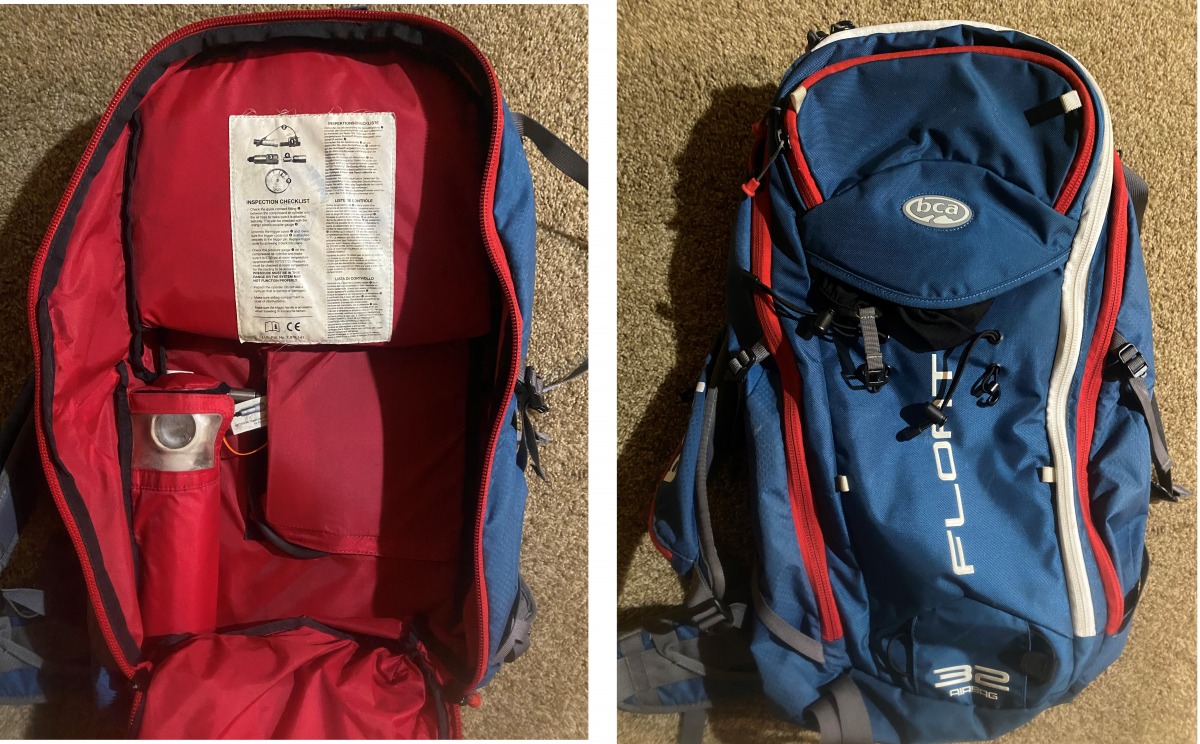
An older Float 35 avalanche pack – I have owned this pack for 4 years, using it every season for at least 20 days. I have taken good care of it and I’d say it looks like new.
Airbag backpacks are pricey, even used. Inspecting the condition of the backpack is important.
If the pack requires a cylinder, it is ideal to get the cylinder with the system so you can check that the system works as expected.
Make sure to test and deploy the airbag before purchasing, to ensure it works as expected (even if it means that you may need to refill the cylinder).
Checking the release date of the pack is helpful as well, to know if warranty would be able to cover parts if anything breaks.
Backpack: can any backpack work for ski touring?
While we would recommend getting an airbag backpack, we also understand that not everyone might want one (plus they are pricey).
The truth is most backpacks will work for ski touring, but some might not be comfortable. Size wise, for day trips, somewhere between 25-35 liters is the ideal size.
At a minimum, I’d recommend looking for a pack that has a good hip belt to keep the pack in place while you’re moving. Also, some sort of side straps that will allow you to attach skis/snowboard to the pack.
In my opinion, having a separate pocket that is easily accessible for avalanche gear is a requirement, otherwise those items tend to get lost in the bottom of your pack which is less than ideal and could make them harder to locate in an emergency.
When buying used, check for any rips or tears, or broken zippers and buckles.
Satellite Messengers and Personal locating beacons (PLB)
There are several types of Satellite messengers and PLBs, ranging from those that only send a simple emergency SOS signal, to those that allow two-way text communication.
Now that even the most remote places seem to have service, it can be hard to justify the cost of a satellite messenger. With that said, having a device whose sole purpose it to get you out of trouble is important when adventuring in the mountains
As with any software device, make sure it can turn on/off, connect to your phone, and send messages.
Checking the message functionality can be tricky if the person selling has cancelled their plan (inReach requires you to have an account and a plan to use). If you are looking for one, I suggest to just create an account and have it ready for testing.
Radios
In my personal opinion, you should carry radios on every backcountry outing. If someone in your group fell, got hurt, is taking longer than you expect — having radios is a god send.
You can buy pretty cheap radios new, they may just have less range than more expensive ones. I suggest getting the microphone attachment if you do.
There are a few ski companies that make radios, one of them is the BCA. It’s best feature is ability to turn the radio on and off on the mic.
When buying a used radio, bring another one with to check that both receiving and sending your voice works as expected
I’d also recommend to check that you are able to charge it, if it is one that doesn’t work on replaceable batteries.
Miscellaneous things
A few other things that we won’t go in depth on, but you should look into purchasing are: headlamp, ski straps, First Aid Kit and 10 essentials.
One of the big advantages of buying used gear, in my opinion, is that hopefully you have money left over to invest in an avalanche course! If you are new to touring or returning after a long break, taking a course is a must.
Always practice to make sure you know how to use the equipment that you have. Learn about all the possible modes your beacon can be in, practice digging with your shovel, and deploy your probe a few times. Familiarity with your safety equipment ensures you know how to use it when it matters most.
Snow is starting to fall and the season is transitioning into winter. This is the right time to gather your gear and know before you go! We wish you a safe and happy ski touring year ahead!
WildSnow Girl, Julia Dubinina, is a weekend warrior chasing snow in winter and sun in summer. A lover of long tours and steep skin tracks, she explores the Pacific Northwest and beyond. When she is not out adventuring, she is working away at her corporate desk job for a software company to make her next adventure happen.

